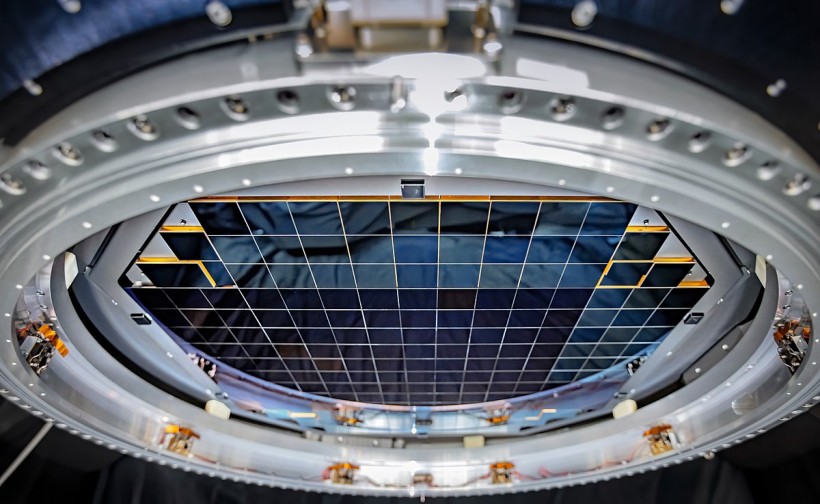The world's largest camera is a few months near completion, and technicians are now only putting the final touches on it at the SLAC National Accelerator Laboratory. Soon, it will be sent from California to Chile and installed on a telescope in the Andes.
Scientists expect exciting discoveries from the 3.2 billion-pixel camera once it is paired with the telescope. According to IEEE Spectrum, engineers have worked to craft the camera in a clean room in a nondescript industrial building in the hills above San Francisco Bay for the last seven years. If all goes well, the camera will be on its way to Chile by May 2023.

The complete focal plane of the future LSST Camera is more than 60 cm (2 feet) wide and contains 189 individual sensors that will produce 3200-megapixel images.
The Largest Lens in the World
The high-resolution LSST camera will fit into the heart of the future Vera C. Rubin Observatory in Chile. Building the camera required a lot of patience, testing, and engineering.
Engineers said that the road to the camera's completion had been long, and there is still more to go before the end is in sight. Staff engineer Hannah Pollek at SLAC said they are at the stage where they have fully assembled the camera's mechanism.
The Guinness Book of World Records has recognized the camera's lens as the largest lens in the world, measuring 5 feet (1.57 meters) across. The lens can catch the light reflected through a triplet of mirrors built separately when installed in the telescope.
The telescope will point at a parcel of the sky that is 3.5 degrees across or seven times the full moon's width. It will take two exposures, back-to-back, estimated to be 15 seconds each. The telescope will then move along the next parcel in a mission to survey the southern sky for many years.
READ ALSO: Gemini Observatory Twin Telescopes Capture the Ethereal Image of a Butterfly's Wing
Components of the World's Largest Camera
IEEE Spectrum reports that detectors sit behind the lens designed from charge-coupled device (CCD) sensors used in the astronomy field. These detectors are visible as a silver-and-blue grid due to the camera having two different suppliers. Together, they could produce 3.2 gigapixels images.
But these detectors need to be chilled to do that frequently. That is why a large bundle of tubing behind the camera is used for the refrigeration to help a cryostat coll the detectors at around -100 °C. That temperature eliminates the noise that CCDs could pick up.
Aside from the detectors, the camera as back-end electronics also needs to keep chilled because they generate some 1,000 watts of heat. Although, it does not require a cryostat and only uses cold liquid pumped through as a counter.
Moreover, some components are not yet installed. One of the important operation parts of a camera for astronomers is the filters that will fit over the lens. LSST camera has six of them, each of which is coated to only let through specific wavelengths of light, like ultraviolet or near-infrared.
Five of them will be in a carousel about the camera, while the sixth one will be sitting in storage when one of the installed filters are needed to be swapped in. These filters are delicate glass, so engineers have tested them with a dummy metal disk of the same weight.
When filters and final body panels are installed, engineers will swing the camera to point to the floor, where they will test its performance in a darkened environment by shuffling light sources.
Building and testing the LSST camera are one saga that engineers are currently completing. Meanwhile, sending it to its destination in northern Chile is an entirely different ordeal.
They have to include English-language technical instructions that have been translated into Spanish for the benefit of Chilean technicians. The lenses and other glass parts will be removed, and the camera will be mounted within a shipping container and clamped with special frames that will isolate vibrations and keep it stable.
RELATED ARTICLE: The World's Largest Camera Has Taken the First 3,200 Megapixel Images at SLAC
Check out more news and information about Space in Science Times.














